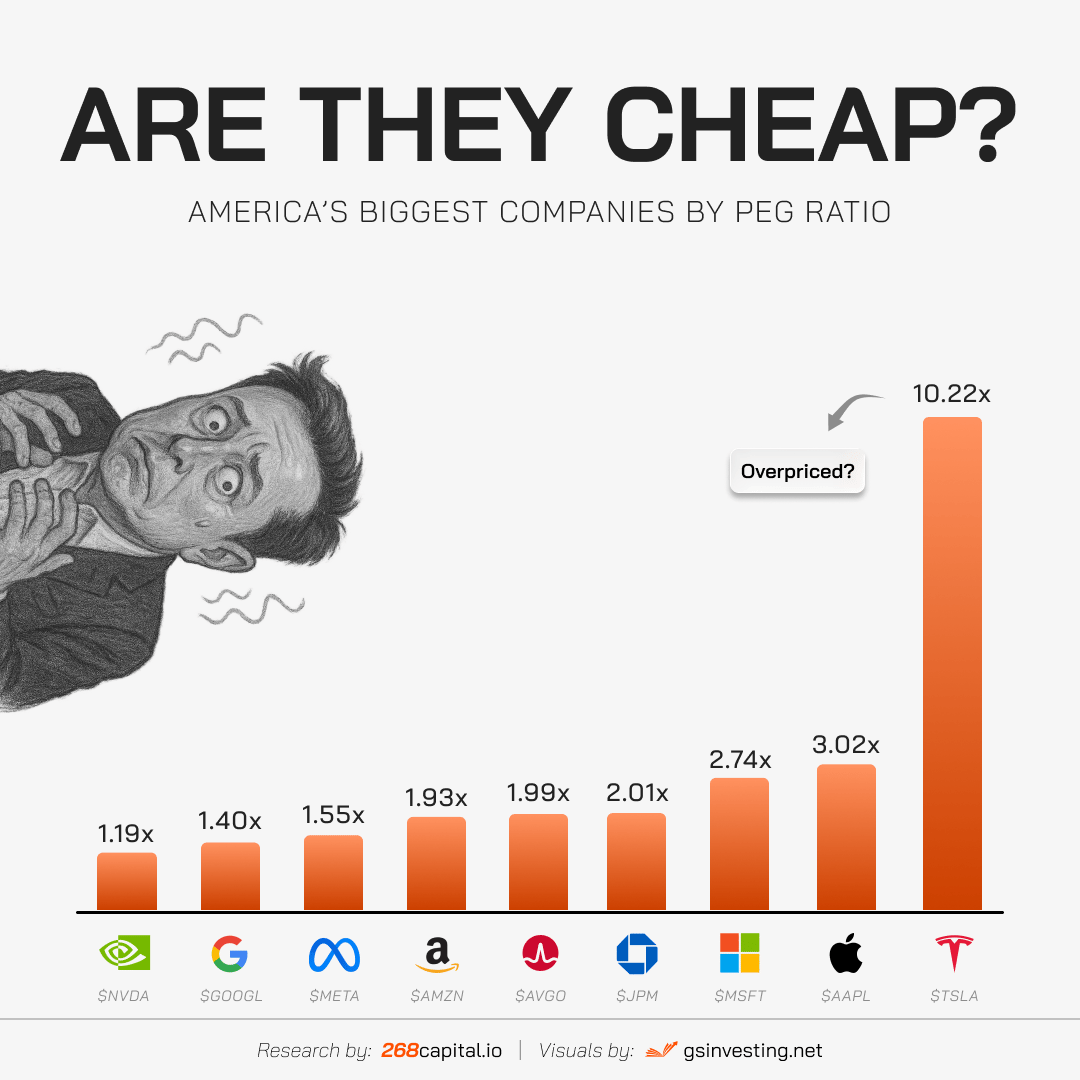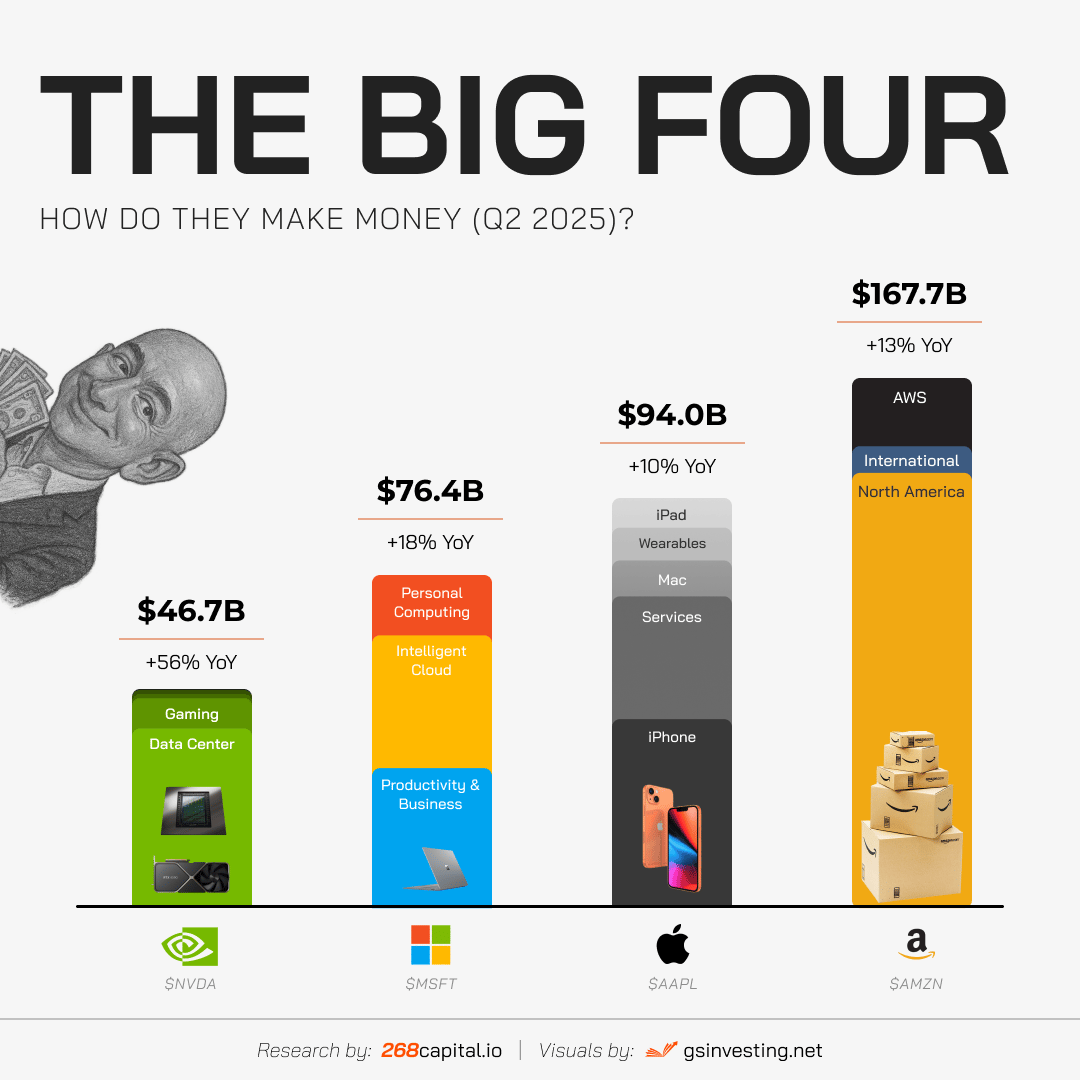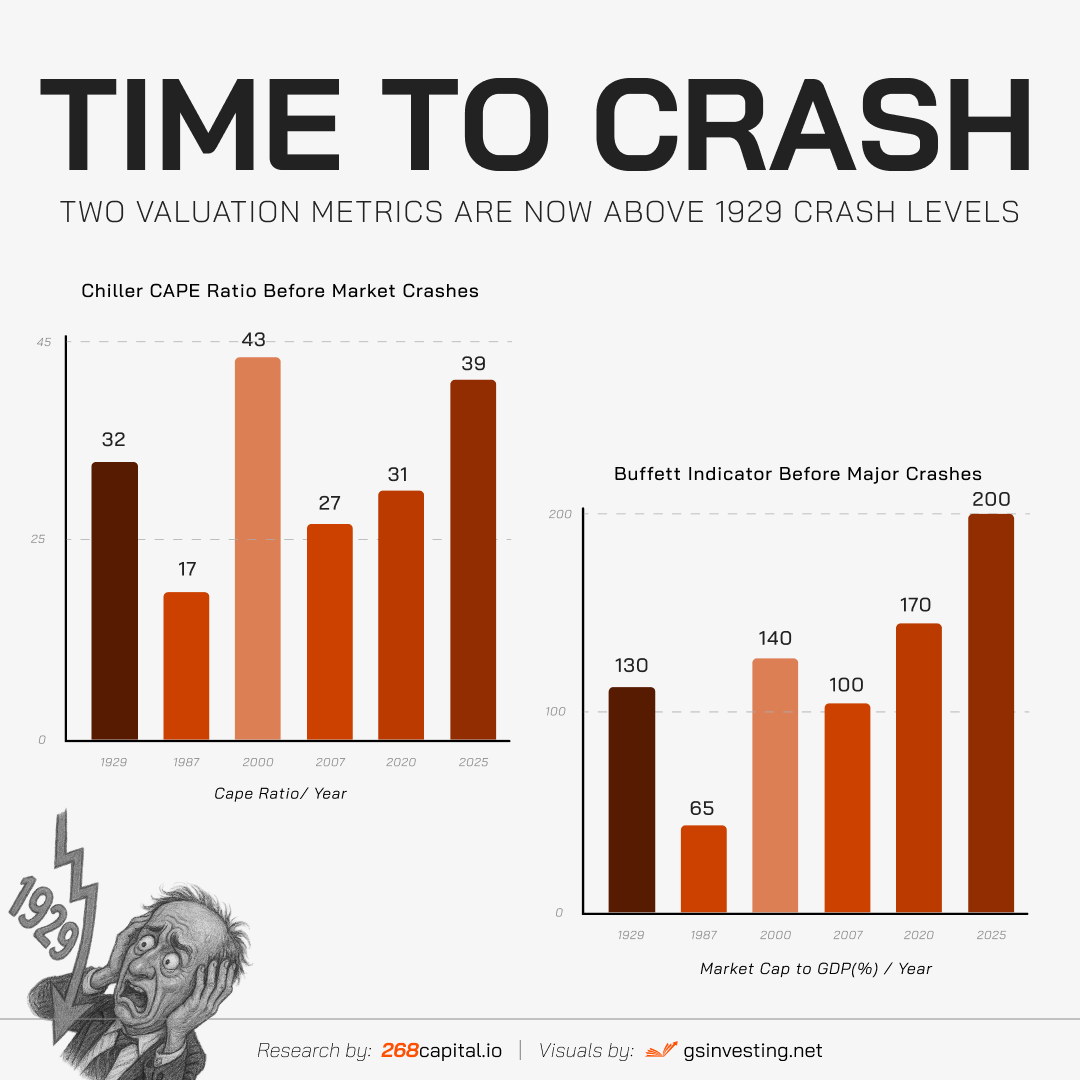Good Morning
Today we’re looking at Buffett’s unmatched returns since 1965, whether America’s biggest companies are truly cheap, how the Big Four tech giants actually make money, why valuations may be flashing 1929-style warning signs, and a timeless checklist for smarter investing.
This Week’s Top Stories

CHART OF THE WEEK
$1 Into $54,904
Since 1965, Warren Buffett’s Berkshire Hathaway has crushed every major asset class—stocks, real estate, and even gold—turning a single dollar into a small fortune.
The numbers are staggering. From 1965 to 2024, Berkshire Hathaway compounded at nearly 20% annually, delivering a 5,490,340% total return. To put that into perspective, $1 invested alongside Buffett became $54,904, compared to just $386 in the S&P 500, $74 in real estate, and $20 in gold. The lesson? Compounding is powerful—but disciplined, long-term investing is what makes it unstoppable. Buffett didn’t rely on hype or speculation. Instead, he focused on strong businesses, consistent cash flows, and time in the market. The result was wealth creation on a scale few can match.

STOCK IDEA VAULT
The Most Overpriced Stock In America
PEG ratios reveal if a stock’s growth justifies its price. And among the giants—Apple, Microsoft, Amazon, Google—one company is standing out as massively stretched.
The PEG ratio compares a company’s price-to-earnings with its growth rate. A PEG near 1 suggests fair value, while higher numbers can signal overpricing. Nvidia, Google, and Meta all hover around a reasonable 1–1.5x. Even Apple sits at 3.0x. But Tesla? It’s a jaw-dropping 10.2x—far above the rest. That means investors are paying 10 times more per unit of growth compared to industry peers. Whether that’s visionary optimism or pure hype is up for debate. What’s clear is that valuation matters, and history shows that ignoring it often ends painfully.

268 STOCK RADAR
How The Big Four Make Money
Nvidia, Microsoft, Apple, and Amazon just posted monster Q2 2025 revenues—but the real story is where the money comes from.
Nvidia brought in $46.7B, soaring +56% YoY, with its data center business powering the AI boom. Microsoft hit $76.4B (+18% YoY), fueled by cloud and productivity tools. Apple pulled $94.0B (+10% YoY), with iPhones still its money-printing machine alongside services and wearables. And then there’s Amazon—towering at $167.7B (+13% YoY), with AWS cloud, international sales, and U.S. retail driving the bulk. Together, the “Big Four” generated $385B in just three months. That’s more than the GDP of some entire countries.

MARKET MADNESS
Time To Crash
Two of the market’s most-watched valuation metrics—the CAPE ratio and the Buffett Indicator—are now flashing red, sitting above levels seen before the Great Depression.
History doesn’t repeat perfectly, but it often rhymes. Before the 1929 crash, the CAPE ratio stood at 32. Today, it’s at 39. The Buffett Indicator—market cap vs. GDP—was 130% before that crash. Now, it’s at a record +200%. These aren’t perfect timing tools, but they do reveal when valuations stretch far beyond historical norms. Previous spikes in both metrics—2000, 2007, 2020—were followed by sharp market drawdowns. The uncomfortable truth: the higher valuations climb, the less margin of safety investors have. And right now, those safety nets look thinner than ever.

LAWS OF INVESTING
The Ultimate Investor’s Checklist
Great investors don’t rely on gut feelings—they use strict rules. Here’s the checklist of financial metrics that separates strong businesses from risky ones.
Before putting money into any stock, running through a checklist helps cut through hype. On the income statement, healthy companies should show >25% operating margins, <35% sales & marketing spend, and >15% profit margins. On the balance sheet, a debt-to-equity ratio below 0.9, strong liquidity (>1.2x), and zero preferred shares signal financial strength. For cash flow, investors look for free cash flow margins above 10% and capex intensity below 20%. Add in steady EPS growth, upward-trending retained earnings, and consistent buybacks—and you’ve got a business built to compound wealth. Investing isn’t about guessing—it’s about discipline.

A FREE GIFT
Love what you’re reading?
Refer two friends and we’ll send you our stock-picking framework — the same system we used to catch Meta at the bottom and Fortinet before it took off. We could sell it for $499, but we’d rather give it to you for free.